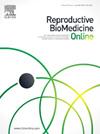NON-INVASIVE PGTA by AI
IF 3.7
2区 医学
Q1 OBSTETRICS & GYNECOLOGY
引用次数: 0
Abstract
The application of artificial intelligence (AI) in assisted reproduction addresses the complex landscape of infertility, a prevalent condition affecting a significant percentage of the reproductive-age population. Advances in reproductive medicine, marked by milestones such as in vitro fertilization (IVF) and intracytoplasmic sperm microinjection (ICSI), have led to the development of assisted reproduction techniques (ART). While multiple embryo transfer (MET) has traditionally been employed to increase pregnancy chances, it carries risks. Therefore, embryo selection techniques have suffered a rapid increase in interest. The introduction of incubators with time-lapse technology allowed embryo analysis without disturbing culture conditions and involved the introduction of the first embryo selection algorithms. Consequently, developing and including AI approaches is the current challenge. This presentation addresses real-world challenges in the embryology field by applying deep learning methods. The final goal is to design, develop, and validate tools that support the daily routine in an IVF laboratory, ultimately improving success rates in assisted reproductive clinics. The complexity of the solved tasks increases systematically, providing consistent knowledge based on embryology. Specific goals involve solving concrete tasks with different methodologies and exploring novel AI techniques. The tasks include fecundation, viability, quality, and prediction of euploid embryos. The technical approaches encompass automation, segmentation, supervised contrastive learning, and inductive transfer techniques. The findings contribute to the field of embryology, showcasing potential applications of innovative AI methodologies. The incorporation of AI into the sperm selection process is one of the most explored areas in recent years within the field of assisted reproduction too and several AI-tools have been developed for analyzing oocyte quality according to its morphology. Ovarian stimulation is also one of the directions in the landscape of assisted reproduction which can be improved with the help of AI and there are studies in this direction using AI. Future goals introduce consistent integration into consultation and embryology laboratories, taking into account real clinical conditions, contributing to improved success rates in assisted reproduction clinics, and further exploring non-invasive techniques for genetic analysis.
求助全文
约1分钟内获得全文
求助全文
来源期刊

Reproductive biomedicine online
医学-妇产科学
CiteScore
7.20
自引率
7.50%
发文量
391
审稿时长
50 days
期刊介绍:
Reproductive BioMedicine Online covers the formation, growth and differentiation of the human embryo. It is intended to bring to public attention new research on biological and clinical research on human reproduction and the human embryo including relevant studies on animals. It is published by a group of scientists and clinicians working in these fields of study. Its audience comprises researchers, clinicians, practitioners, academics and patients.
Context:
The period of human embryonic growth covered is between the formation of the primordial germ cells in the fetus until mid-pregnancy. High quality research on lower animals is included if it helps to clarify the human situation. Studies progressing to birth and later are published if they have a direct bearing on events in the earlier stages of pregnancy.
 求助内容:
求助内容: 应助结果提醒方式:
应助结果提醒方式:


